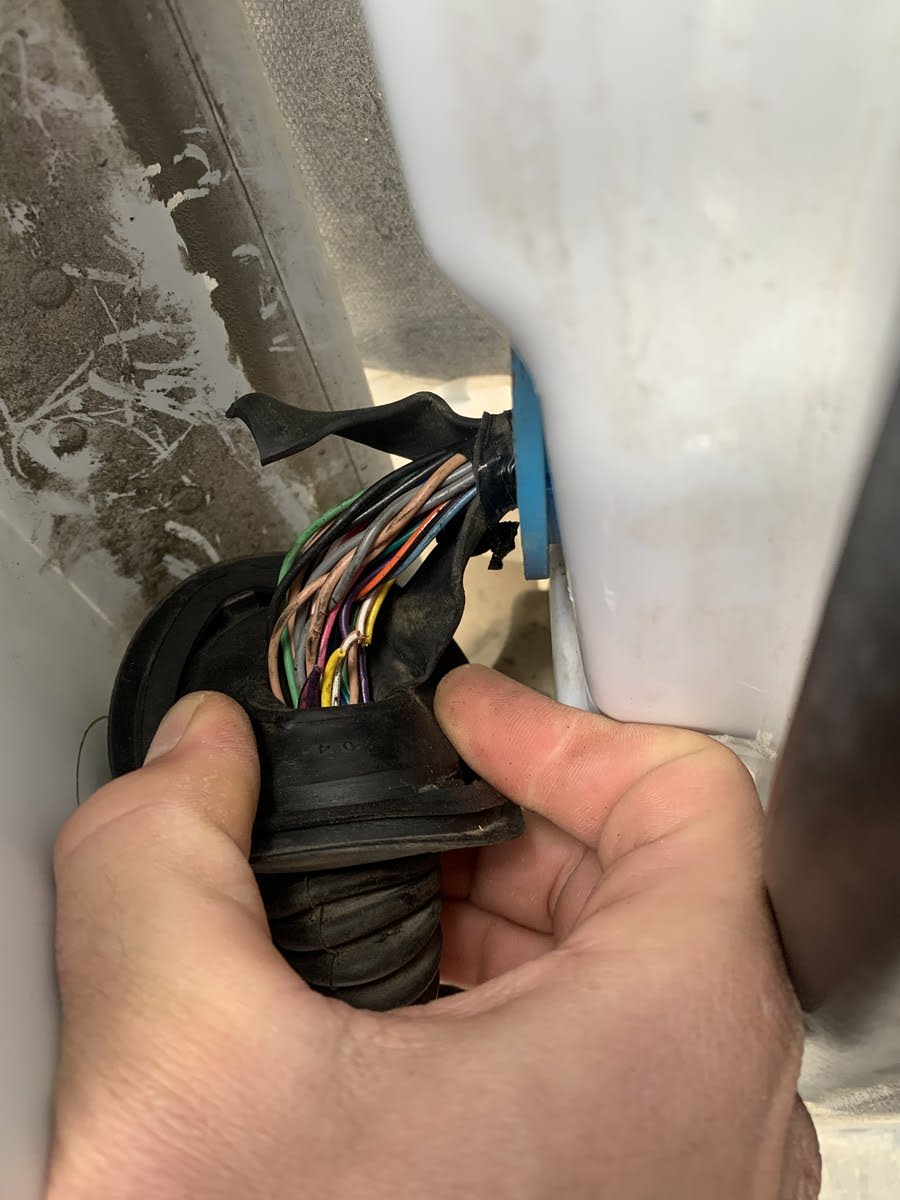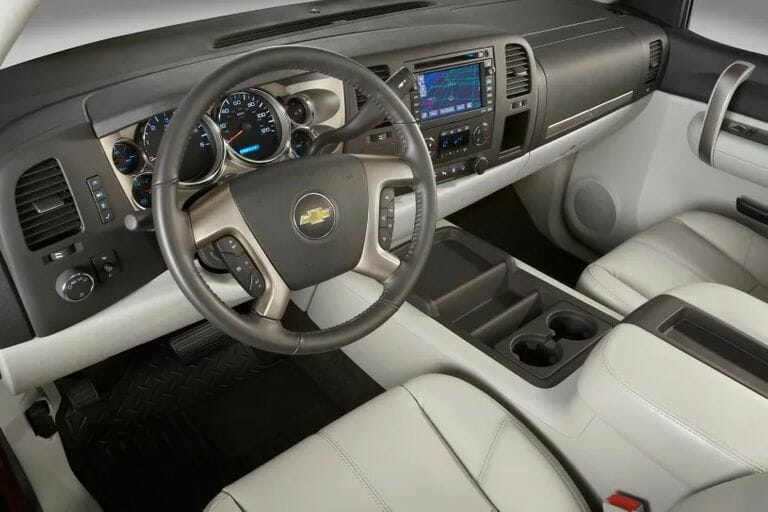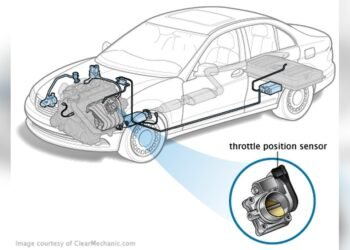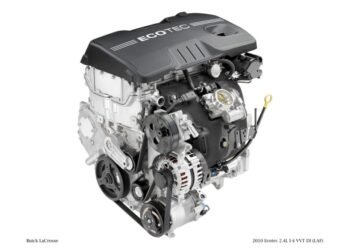Troubleshooting a 2007 Chevy Silverado involves diagnosing issues like engine misfires, transmission problems, or electrical malfunctions. Common problems include faulty ignition coils, transmission slippage, and dead batteries.
The 2007 Chevy Silverado, a dependable workhorse of a pickup truck, can sometimes present challenges to its owners. These trucks are known for their robust performance and durability, but like any vehicle, they can experience problems that require troubleshooting. For those experiencing difficulties with their Silverado, identifying the root cause is the first step towards a solution.
Whether it’s a stuttering engine, unresponsive gearbox, or flickering lights, the key is to pinpoint the issue promptly. This introduction sets the stage for a comprehensive guide that will walk you through common problems and troubleshooting techniques, helping you keep your Silverado in top running condition. Our focus on clear, actionable advice ensures you get the information you need without any fluff or unnecessary jargon.
Introduction To 2007 Chevy Silverado Troubleshooting
2007 Chevy Silverado owners know reliability is key. Yet, even the sturdiest trucks face issues. Troubleshooting these problems early saves time and money. This guide dives into common troubles and swift fixes. Let’s keep your Silverado running smooth.
Common Issues Faced By Owners
- Electrical glitches: Headlights and dashboard lights may fail.
- Transmission troubles: Shifting gears might feel rough.
- Steering struggles: The wheel may feel stiff or unresponsive.
- Brake problems: Squeaks or poor stopping signal a check-up.
- Fuel system faults: A drop in mileage or stalling could occur.
Benefits Of Quick Fixes
| Benefit | Description |
|---|---|
| Saves money | Avoids costly repairs later. |
| Boosts safety | Reduces risk on the road. |
| Enhances performance | Keeps the truck running well. |
| Increases longevity | Extends vehicle life. |
Starting Problems
Owners often face starting issues with their 2007 Chevy Silverado. A smooth start ensures a great day. Let’s troubleshoot common starting problems.
Battery Issues And Solutions
Battery problems are top culprits for starting woes. Signs include dim lights and slow cranking.
- Check battery terminals for corrosion.
- Clean terminals with a baking soda solution.
- Ensure the battery is charged.
- Test battery with a multimeter.
A replacement battery fixes persistent issues.
Ignition System Quick Fixes
The ignition system is key for starting the engine. Simple fixes can get you back on the road.
- Inspect the ignition switch for damage.
- Check the starter motor connection.
- Ensure spark plugs are in good condition.
Replace faulty parts for a sure start.
Engine Performance Issues
Owners of the 2007 Chevy Silverado may face engine performance issues. These can range from mild hiccups to severe stalls. Key signs include power loss, rough idling, and unusual noises. It’s crucial to address these troubles quickly. Proper diagnosis and repair can restore your Silverado’s performance.
Diagnosing Fuel System Troubles
Fuel system problems can lead to engine issues. Symptoms include difficulty starting, stalling, and poor acceleration. Follow these steps for troubleshooting:
- Check the fuel pump. A weak pump can starve the engine of fuel.
- Inspect the fuel filter. A clogged filter restricts fuel flow.
- Examine the fuel injectors. Dirty injectors disrupt the fuel spray pattern.
- Test the fuel pressure. Low pressure indicates a fuel system problem.
Use a fuel pressure gauge to check pressure. Refer to the Silverado’s manual for the correct pressure range.
Solutions For Overheating
Overheating can damage your engine. Prevent this by:
- Regularly checking coolant levels. Top up if levels are low.
- Inspecting the radiator. Look for leaks or blockages.
- Checking the thermostat. Ensure it opens and closes properly.
- Examining the water pump. Listen for noises that suggest a fault.
Keep the cooling system clean. Flushing the radiator prevents blockages. Replace old coolant with fresh fluid to enhance cooling efficiency.
Regular maintenance helps avoid overheating. Check the cooling system at each service interval. This practice keeps your Silverado running smoothly.

Credit: www.cargurus.com
Electrical Glitches
2007 Chevy Silverado owners often face electrical issues. This section dives into common problems and solutions. From dim headlights to flickering dashboard lights, we cover key fixes. Let’s troubleshoot these electrical glitches together.
Headlights And Taillights Fixes
Headlight and taillight problems dim your driving experience. The Silverado might show signs of dimming or complete loss. Here are quick fixes to brighten your path.
- Check fuses and replace if blown.
- Inspect headlight bulbs and connectors for damage.
- Clean corroded ground wires and tighten loose ones.
- Upgrade to LED bulbs for better performance.
Solving Dashboard Light Problems
Dashboard lights that won’t shine can be frustrating. It’s time to regain control of your dash visibility. Follow these steps to fix the lights.
- Start with the dimmer switch. Turn it to adjust brightness.
- If no change, check for a blown fuse and replace it.
- Look for loose connections behind the dashboard.
- Consider bulb replacement if they’re burnt out.
Transmission Snags
Transmission Snags can stall your 2007 Chevy Silverado’s performance. A smooth ride depends on a healthy transmission. Recognizing and fixing transmission issues is crucial. Let’s explore common snags and how to address them.
Fluid Level Checks And Adjustments
Transmission fluid is the lifeblood of your gearbox. Low levels can lead to major problems. Checking fluid levels is simple and vital. Follow these steps:
- Park on a level surface.
- Run the engine until warm.
- Locate the dipstick and pull it out.
- Wipe it clean, reinsert, and check the level.
- Fill up if the level is low.
- Check for leaks regularly.
Proper fluid levels ensure smooth gear shifts. Use the right type of transmission fluid. Your owner’s manual lists the correct kind.
When To Consider A Professional Diagnosis
Some issues need expert hands. Look for these signs:
- Slipping gears signal trouble.
- Delays in shifting are not normal.
- Strange noises or grinding sounds are bad.
- Fluid leaks under the truck need attention.
Diagnose these problems early. A mechanic can prevent bigger issues. They have tools and skills for complex fixes. Save time and money with timely professional help.

Credit: m.youtube.com
Brake System Maintenance
Regular brake checks keep your 2007 Chevy Silverado safe. Well-maintained brakes are crucial. They ensure timely stops and prevent accidents. This section guides you through brake maintenance, specifically focusing on pads, rotors, and pedal feel.
Brake Pads And Rotors Quick Check
Inspect brake pads and rotors regularly for wear and tear. Look for these signs:
- Thin brake pads: Less than 1/4 inch thickness means replacement time.
- Scored rotors: Visible grooves on the rotor surface.
- Weird noises: Squealing or grinding sounds hint at worn pads.
Use a flashlight for a better view. Check both front and rear systems. Replace pads and rotors if needed.
Handling Spongy Brake Pedals
A soft brake pedal can be alarming. It often indicates air in the brake lines. Follow these steps:
- Check brake fluid levels: Top up if low.
- Bleed the brakes: This removes trapped air.
- Inspect for leaks: Fluid on the ground could mean a leak.
If the pedal still feels spongy, consult a professional. They can provide a thorough inspection and fix. Safety comes first with brake issues.
Suspension And Steering Concerns
The 2007 Chevy Silverado stands as a rugged symbol of American truck power. Yet, even the mightiest of trucks can encounter suspension and steering concerns. Owners may experience unusual noises or squeaks that can indicate wear or a need for adjustment. This section delves into common suspension and steering issues, offering troubleshooting guidance and quick fixes.
Troubleshooting Steering Noises
Steering noises can be alarming, but often they reveal simple issues. Begin by checking the power steering fluid level. A low level can lead to a whining noise. If levels are fine, inspect the power steering belt for wear or improper tension. Listen carefully to pinpoint whether the noise occurs during turns or if it’s constant, as this can help identify the problem source.
Quick Fixes For Suspension Squeaks
Suspension squeaks can make a smooth ride feel rugged. Lubricate suspension bushings to silence minor squeaks. Check for loose components; tighten them as necessary. Inspect shock absorbers for leaks or damage, as they can be a common squeak source. Replace worn parts to restore the Silverado’s renowned smooth ride.
Regular maintenance is key to avoiding these issues. Keeping up with scheduled services prevents many suspension and steering problems. This ensures the 2007 Chevy Silverado remains a reliable companion on and off the road.

Credit: www.vehiclehistory.com
Ac And Heating Quirks
The 2007 Chevy Silverado offers robust performance but sometimes faces AC and heating issues. Owners might notice less cold air or weak heating. These quirks can often be solved by recharging the AC system or flushing the heater core. Let’s explore these solutions.
Recharging The Ac System
Over time, your Silverado’s AC might need a refrigerant recharge. Signs include warm air or no air from the AC vents. Recharging is a straightforward process:
- Locate the AC system’s service ports.
- Attach the refrigerant kit.
- Fill to the recommended pressure level.
- Check for leaks or damage.
Always use the correct type of refrigerant. Check your Silverado’s manual for specifics.
Heater Core Flushing For Better Warmth
A clogged heater core can affect cabin warmth. Flushing the heater core can restore heat. Follow these steps:
- Disconnect the heater hoses.
- Attach a hose to the inlet.
- Flush with clean water until it runs clear.
- Reconnect the hoses and refill coolant.
This process removes debris and buildup. It helps achieve better heating in your Silverado.
Final Thoughts
Final Thoughts on your 2007 Chevy Silverado can save you time and money. Knowing when to seek professional help and taking preventative measures are key. Let’s dive into these crucial aspects.
When To Seek Professional Help
- Engine lights turn on.
- Strange noises come from the car.
- Car starts then stops quickly.
- Brakes feel different.
These signs mean it’s time for a pro. Don’t wait too long!
Preventative Measures For Long-term Maintenance
- Regular oil changes keep the engine happy.
- Change air filters to help the car breathe.
- Check tire pressure for safe rides.
- Brake checks prevent future problems.
Taking these steps will help your Silverado last longer.
Frequently Asked Questions
What Is Wrong With A 2007 Chevy Silverado 5.3 Engine?
Common issues with the 2007 Chevy Silverado 5. 3 engine include excessive oil consumption, faulty active fuel management systems, and problems with the throttle position sensor. Owners may also encounter issues with the engine’s knock sensors and spark plugs. Regular maintenance helps mitigate these problems.
How Do You Reset A 2007 Chevy Silverado?
To reset a 2007 Chevy Silverado, turn the ignition key to ‘ON’ without starting the engine, then press the gas pedal three times within five seconds, and wait for the ‘Oil Life Reset’ message to appear.
What Would Make My Chevy Silverado Not Start?
Several issues could prevent a Chevy Silverado from starting, including a dead battery, faulty ignition switch, failed starter, empty fuel tank, or a malfunctioning fuel pump.
What Causes Loss Of Power On Chevy Silverado?
Loss of power in a Chevy Silverado often stems from fuel system issues, clogged air filters, or faulty spark plugs. Ignition system problems and transmission issues can also contribute. Regular maintenance helps prevent these common causes.
What Causes Silverado Engine Issues?
Common engine problems in a 2007 Chevy Silverado may be due to faulty spark plugs, clogged fuel injectors, or a malfunctioning mass airflow sensor.
Conclusion
Tackling issues with your 2007 Chevy Silverado doesn’t have to be daunting. This guide has armed you with essential tips for troubleshooting common problems. Remember, regular maintenance is key to smooth performance. For more complex issues, consulting a professional is wise.
Keep your Silverado running optimally and enjoy the ride.















